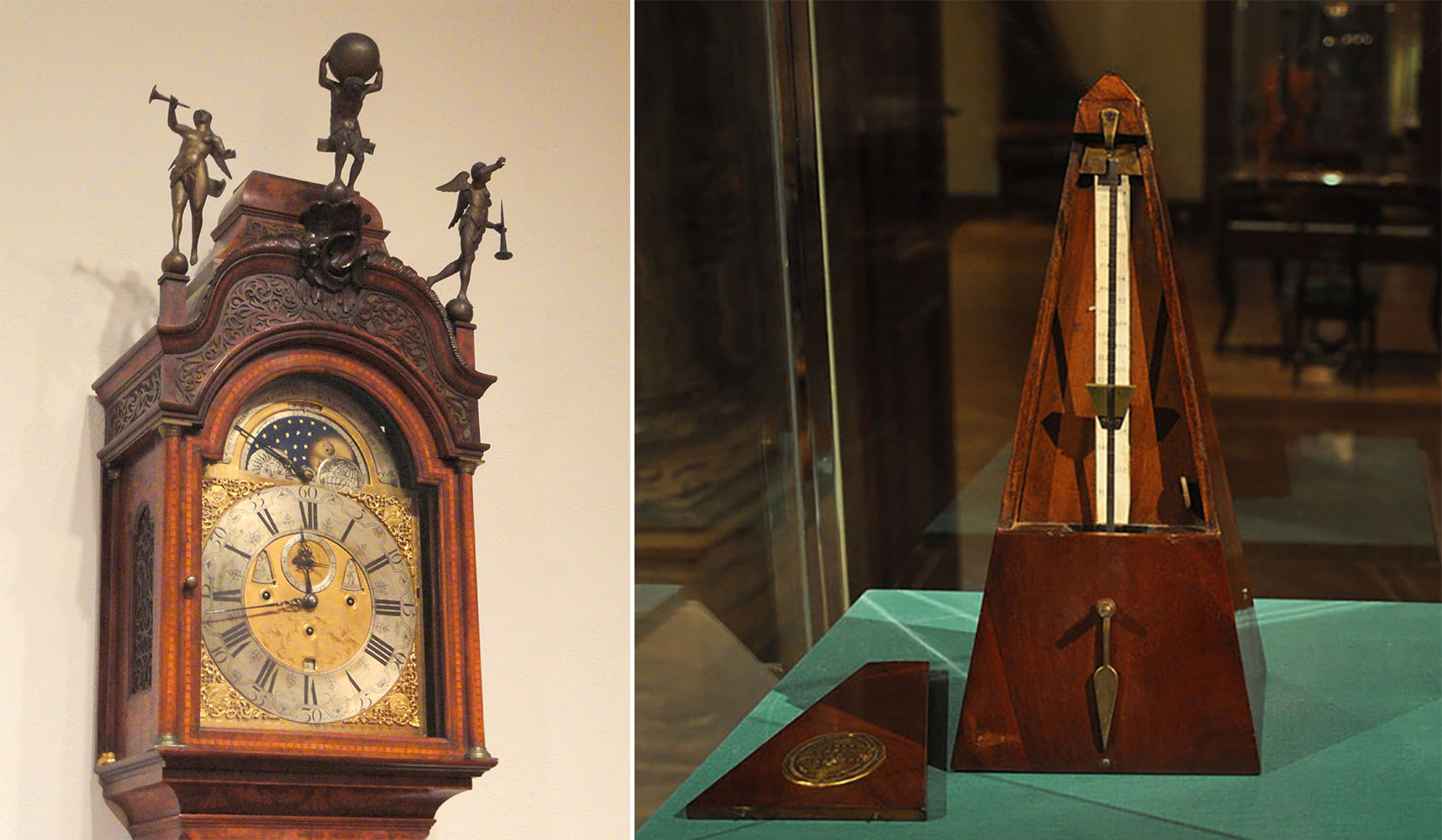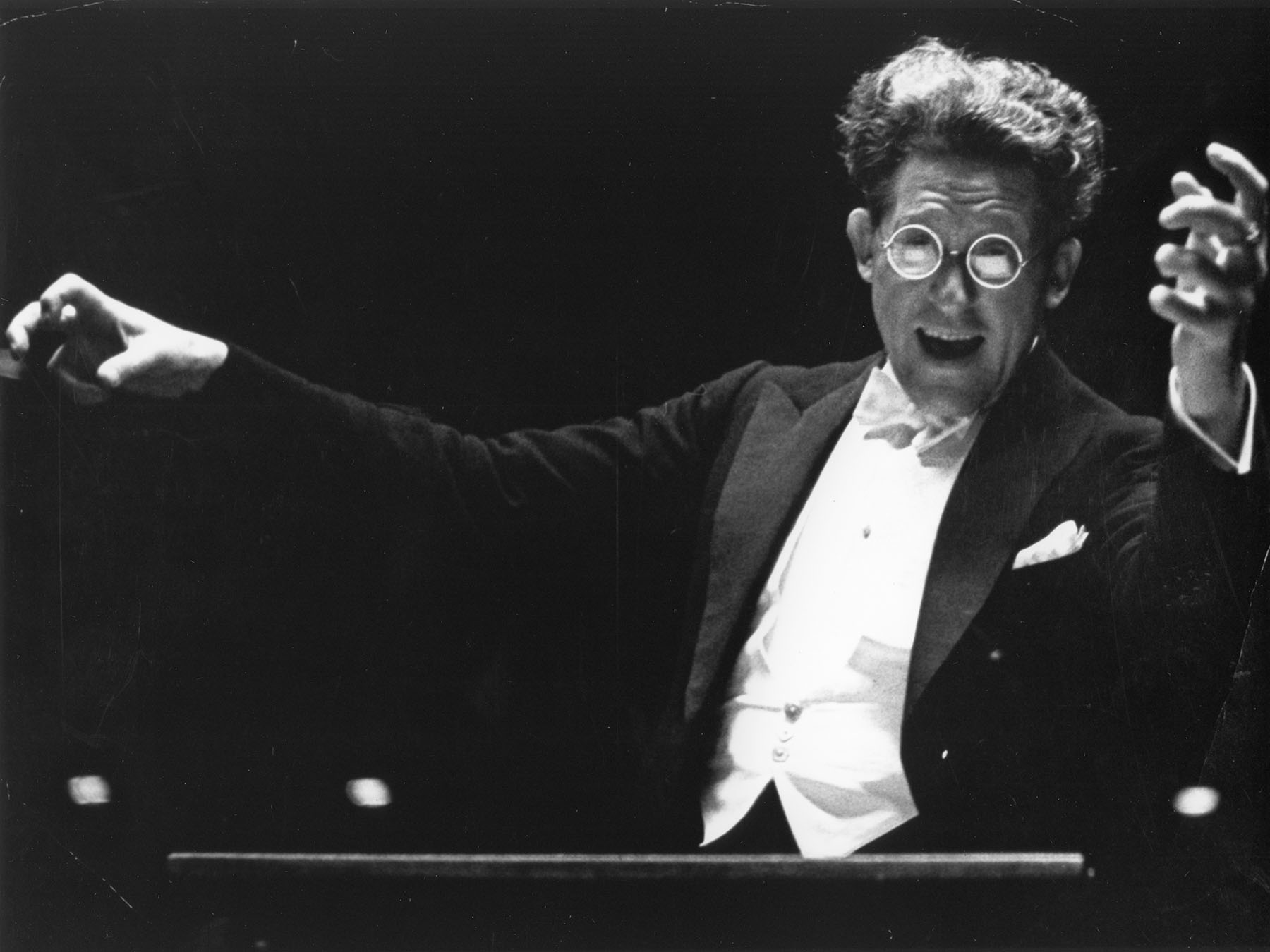"Als ob" or Making Old New Again:
Beethoven's Symphony No. 8 in F Major (1812)
The Eighth Symphony generally has been regarded as the slightest of Beethoven’s mature symphonies because of its short length, lighter tone, and frequent return to the musical styles and forms of the eighteenth century. However, beneath the gaiety of its surface lies much complexity and a promethean connection. Listen below to Music Director Franz Welser-Möst describe how he came to appreciate the symphony in a new light when he viewed it through the lens of “als ob” (as if):
Franz discusses how the Eighth Symphony is a reinvention of the symphonic past.
The idea of “als ob” (as if) is a sophisticated way of returning to the past: doing something “as if” it were something else. Instead of simply copying or repeating older musical styles or forms, Beethoven reinvents them by infusing musical elements of his time. Beethoven scholar Lewis Lockwood describes this “reanimation of the classical manner” as “an expression of [Beethoven’s] sense of freedom.”1 If in the Seventh Symphony, Beethoven explored rhythm as an expanded dimension of music, then in the Eighth, Beethoven is reminding us that there is much that the musical past can tell us and that one does not need to be a pioneer and revolutionary to have something to say.
You can hear some of this in the third movement. Beethoven returns to the minuet and trio, a distinctly eighteenth-century dance form and, prior to his popularization of the scherzo, the typical third movement of a classical symphony. However, Beethoven’s minuet freely mixes new and old: The middle trio section is scored in imitation of its roots (a literal trio of musicians), but, as Franz remarks, when Beethoven brings in the strings, the sound changes to something much more romantic. In the minuet sections of the movement, Beethoven playfully comments on the minuet’s grand and sometimes pompous associations with past nobility through exaggerated accents and dynamic shifts.
Beethoven: Symphony No. 8, III. Tempo di minuetto
The Cleveland Orchestra, Christoph von Dohnányi
Archival Recording: Severance Hall, February 6, 1983
A Musical Clock: Symphony No. 8, II: Allegretto Scherzando
 Left: An eighteenth-century musical clock (c. 1750-1775) by famed clockmaker Otto van Meurs, plays a tune on bells to denote specific times of the day (Fogg Museum, Harvard University). - Right: Picture of “Maelzel’s metronome” as Beethoven would have known it
Left: An eighteenth-century musical clock (c. 1750-1775) by famed clockmaker Otto van Meurs, plays a tune on bells to denote specific times of the day (Fogg Museum, Harvard University). - Right: Picture of “Maelzel’s metronome” as Beethoven would have known it
 In the score to the second movement, Beethoven writes repeated notes to imitate the ticking of a clock or metronome. Taken from the 1837 edition by publisher Tobias Haslinger.
In the score to the second movement, Beethoven writes repeated notes to imitate the ticking of a clock or metronome. Taken from the 1837 edition by publisher Tobias Haslinger.
The superficially simple second movement is an excellent example of this engagement with the past. Dominated by a musical imitation of a ticking clock, this movement is commonly considered to be a representation of the beating of a metronome, a new device for which Beethoven should great enthusiasm.2 However, this interpretation is now considered apocryphal.3 In line with the idea of “als ob,” the movement can be heard (and likely was heard at the time) as an imitation of a major classical work by Beethoven’s teacher, Haydn, Symphony No. 101 in D Major, “The Clock.” Additionally, this movement harkens back to an older meaning of Scherzo as a “joke” – with this movement then being “a little joke.”4 Listen below to the opening of this movement, taken from a 1936 recording of The Cleveland Orchestra, Artur Rodzinski conducting:
 Artur Rodzinski, the Orchestra’s second music director (1933-1943), conducting the Orchestra at Cleveland’s Public Auditorium on November 27, 1938. Only two recordings exist of Rodzinski performing Beethoven with the Orchestra: a commercial recording of Beethoven’s First Symphony, and this 1936 concert featuring Beethoven’s Eighth. Photograph by Geoffrey Landesman.
Artur Rodzinski, the Orchestra’s second music director (1933-1943), conducting the Orchestra at Cleveland’s Public Auditorium on November 27, 1938. Only two recordings exist of Rodzinski performing Beethoven with the Orchestra: a commercial recording of Beethoven’s First Symphony, and this 1936 concert featuring Beethoven’s Eighth. Photograph by Geoffrey Landesman.
Beethoven, Symphony No. 8, II. Allegretto Scherzando
The Cleveland Orchestra, Artur Rodzinski
Archival Recording: Severance Hall, February 22, 1936
However, according to musicologists Martin Geck and Lewis Lockwood, it is not simply a return to an older classical model, but a sophisticated, sly play on the idea of a musical clock. Lockwood and Geck both note how the movement playfully deconstructs the idea both of a clock and also of a musical imitation of a clock: unlike a clock’s precise, regular mechanisms, those of this movement are out of whack: timings get off progressively, phrases get stuck in ruts, and there are unexpected surprising shifts in tone.5 Listen to the remainder of the movement below in a 2011 recording with Franz conducting:
 Two Cleveland Orchestra bassists (L: Charles Barr; R: Charles Carlton) performing at an education concert on April 21, 2005. Their faces show the kind of joy a movement like this one tries to create in a listener. Photograph by Roger Mastrioanni.
Beethoven, Symphony No. 8, II. Allegretto Scherzando
Two Cleveland Orchestra bassists (L: Charles Barr; R: Charles Carlton) performing at an education concert on April 21, 2005. Their faces show the kind of joy a movement like this one tries to create in a listener. Photograph by Roger Mastrioanni.
Beethoven, Symphony No. 8, II. Allegretto Scherzando
The Cleveland Orchestra, Franz Welser-Möst
Archival Recording: Severance Hall, May 20, 2011
To a promethean figure in art, creating something that can inspire and uplift others does not require the work be on an epic scale, of vast dimensions, or completely new and revolutionary. There is value in the small and the already-done, and Beethoven’s Eighth Symphony stands as a reminder of this truth.
1 Lewis Lockwood, Beethoven’s Symphonies: An Artistic Vision (New York: W.W. Norton, 2015): 171.
2 The story behind this attribution is that at an 1812 farewell dinner in Vienna for Beethoven (before he left for Linz to visit his brother and work on his Eighth Symphony), Beethoven composed a canon in honor of Maelzel and his device, the chronometer (later renamed the metronome). The tune of this canon later became the source of the main theme for the symphony’s second movement. Source: Anton Felix Schindler, Beethoven as I Knew Him, translated by Constance S. Jolly, edited by Donald W. MacArdle (Meneola, NY: Dover, 1996), 170-171.
3 Martin Geck, Beethoven, translated by Anthea Bell (London: Haus Publishing, 2003), 87.
4 Lockwood, Beethoven’s Symphonies, 180-181.
5 Geck, Beethoven’s Symphonies: Nine Approaches to Art and Ideas, translated by Stewart Spencer (Chicago: University of Chicago Press, 2017), 129-130; Lockwood, Beethoven’s Symphonies, 180-182.
Alexander Lawler
Alexander Lawler is a Historical Musicology PhD student at Case Western Reserve University. This is his third year working in the Orchestra’s Archives, having previously written “From the Archives” online essays (2015-2016) and designed a photo digitization and metadata project (2016-2017).

Symphony No. 8
The Eighth Symphony generally has been regarded as the slightest of Beethoven’s mature symphonies because of its short length, lighter tone, and frequent return to the musical styles and forms of the eighteenth century.
Read more >

Leonora Overture No. 3
Fidelio (1805), Beethoven’s only opera, is a celebration of freedom. In the opera, Florestan has been imprisoned by the tyrant Don Pizarro.
Read more >

Symphony No. 2
Beethoven first realized he was becoming deaf in the summer of 1798, at age twenty-seven. After an initial episode of total deafness, Beethoven found that his hearing had become filled with an unending “maddening chorus of squealing, buzzing, and humming.”
Read more >

Symphony No. 6
Beethoven’s Pastoral Symphony premiered on the same concert as the Fifth Symphony (December 22, 1808). The two works were quite different: Whereas the Fifth was a difficult journey from darkness to light, the Pastoral was a genial, warm-hearted journey through the countryside.
Read more >

Grosse Fuge
The Grosse Fuge (Great Fugue) is Beethoven’s most complex work. It was originally to be the last movement of his String Quartet No. 13. However, it unluckily proved to be both technically challenging for the performers and bewildering to the audience, and was, instead, turned into its own stand-alone work.
Read more >

Symphony No. 9
Beethoven’s Ninth Symphony stands as the culmination of Beethoven’s twenty-four-year career as a composer of symphonies. The Ninth both sums up Beethoven’s artistic career and, with the choral finale, daringly points the way forward to new conceptions of what a symphony could say and be.
Read more >